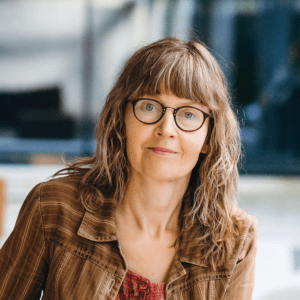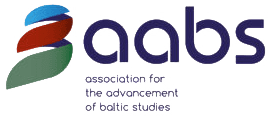The AABS 2022 Conference will look toward the future to explore how the Baltic States will move forward into the next century, as a crossroads between Europe and Asia, Nordic and Eastern Europe. Similarly, the field of Baltic Studies is at a crossroads between new and old diaspora communities negotiating the implications of what it means to advance the study and research of the Baltic States into the next century. The conference will promote intersections of academic disciplines, scholarship, and community by focusing on the implications for the Baltic States in the future at the crossroads of different regions, cultures, religions, and historical perspectives. Please find more information here, and registration here.
Epp Annus (PhD, University of Tartu) is Lecturer, the Ohio State University and Associate Professor, Tallinn University.
Dr. Annus is co-chair of the Libraries and Museums division at AABS 2022. AABS met with her to discuss the division and what she’s looking forward to at the conference. The transcript of our conversation has been lightly edited for clarity and length.

AABS: To start, can you give us a brief overview of your division and what it will cover? What’s new in your division for this conference, compared with previous years?
EA: The division covers library databases, museums, exhibitions, and interdisciplinary research. Since there’s a strong emphasis on outreach, one very important question for us is how to make the data from collections available for both researchers and for the general public. One thing I appreciate is that there is no clear division here, as if this were one process with two aims.
This year we also have a renewed emphasis on digitalization, which is something we see more of every year. There’s also a presentation about how to involve audiences in preserving heritage, and making things happen collectively, such as exhibitions, fairs, and performances. That’s new this year.
AABS: What role will these panels and presentations serve in the global academic conversation?
EA: This is a very important question. I would emphasize a general tendency coupling research and scholarship with outreach. Placing an ever-greater emphasis on outreach is exactly where we are going with this set of panels – there always needs to be an aspect of outreach.
AABS: Are there different trends or emphases in the North American sphere of the field, versus the European sphere, that are going to be coming together at the conference?
EA: I think it will be very useful to have an organized session that deals specifically with North American databases and Baltic collections in North American libraries – and then we also have presentations about Baltic libraries in Europe. This is very promising, I think, and we’ll have some very good conversations. We might very well invite scholars from the North American panel to be involved as discussants for the European presentations. This is a great position to start a promising conversation.
AABS: With a particular eye to attendees who are not in your field, what do you think attendees can learn from panelists in your division?
EA: This particular set of panels is very special in that there’s a strong emphasis on topics of value for a very broad range of scholars. So, if we’re talking about what kind of library collections are available for research in North America, for example, this is something that many of us should know more about. Certainly I myself don’t know as much about these collections as I would like, and I’m very much looking forward to this particular panel.
Similarly, it’s easy to imagine that questions around developing exhibitions might be of interest for many. In the academy, and perhaps especially in Europe, we see more and more emphasis on interdisciplinary research with a clear eye on public access. These kinds of discussions will be useful for everyone, and I’d recommend everyone to think in these terms. And of course, we see more and more digitalization, which we see everywhere, so it’s important to approach these questions from different angles.
AABS: What are you excited for at the conference?
EA: Honestly, just the fact of people coming together: to be able to talk to colleagues without the screen in between. There’s a very special presence and a very special energy that scholarly events like this can produce. I think we’ve all really missed that and it is something we look forward to finding again.
